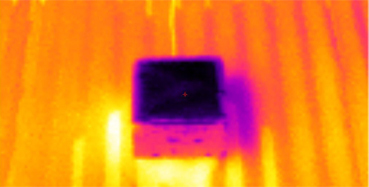Raise the roof for supercool technology

Researchers from the University of Technology, Sydney (UTS) have developed a roof surface that will stay cooler than the ambient air temperature - even under the mid-summer Australian sun.
The material is said to utilise a ‘coated polymer stack’ - a combination of specially chosen polyesters on a silver film. Published in the journal Advanced Science, the development could have major implications for reducing the heat load in urban areas and, consequently, cutting energy use.
There are several benefits to cool roofing, according to study co-author Professor Geoff Smith. These include reducing the urban heat island problem in towns and cities; eliminating peak power demand problems from the operation of many air conditioners; ventilation with cooler air; and higher performance of rooftop air-conditioning installations.
But Professor Smith said cooling a roof below ambient air temperature had been, up until now, “an elusive target”. He explained that dark roofs in particular get very hot: “Even white roofs still absorb enough sunlight to warm up by 9°C to 12°C.
“This new surface, however, stayed 11°C or more colder than an existing state-of-the-art white roof nearby because it absorbs only 3% of incident sunlight while simultaneously strongly radiating heat at infrared wavelengths that are not absorbed by the atmosphere.
“Furthermore, the plastic materials used for the demonstration were available commercially and potentially suited to use on basic roofing.”
The test roof was placed above busy Harris Street on top of the UTS Faculty of Science building with a clear view of the sky and no shadowing. Data was collected for an unprotected new surface and one aged over several days in a polluted outdoor summer environment for assessment of the impact of the build-up of dust and grime.
Professor Smith said the surface maintained its high performance in all conditions. “Extensive dew formation is inevitable for a supercool roof, and dew drops precipitate dirt,” he said. “This roof site, being 25 metres above a busy city transit road, was a stern test. Results show that excellent thermal performance can be maintained.
“Much of the world’s population lives in warm climates,” Professor Smith concluded. “Keeping a roof cool saves energy and makes building interiors comfortable in summer. If enough roofs in a precinct are kept cool, then the local climate can also be beneficially influenced.”
Merger strengthens RSK Australia's regional services
Projence and Western Project Services have merged under the Projence brand, to improve the...
Reaching net zero in the manufacturing sector
Sustainable solutions such as 'green concrete' and carbon tracking were presented at the...
Reducing upfront carbon in built environment: report
ASBEC has released a report aiming to reinforce and amplify government and industry efforts...










